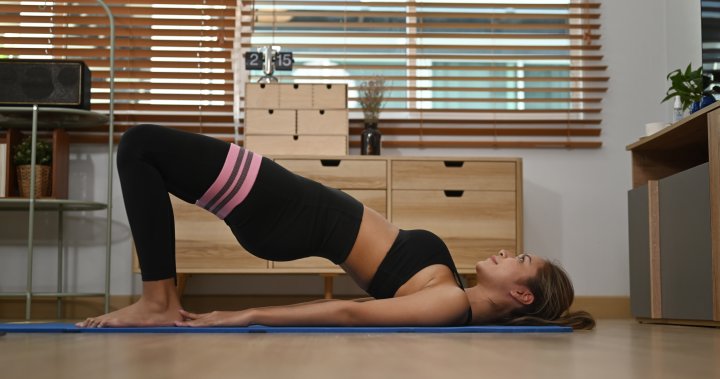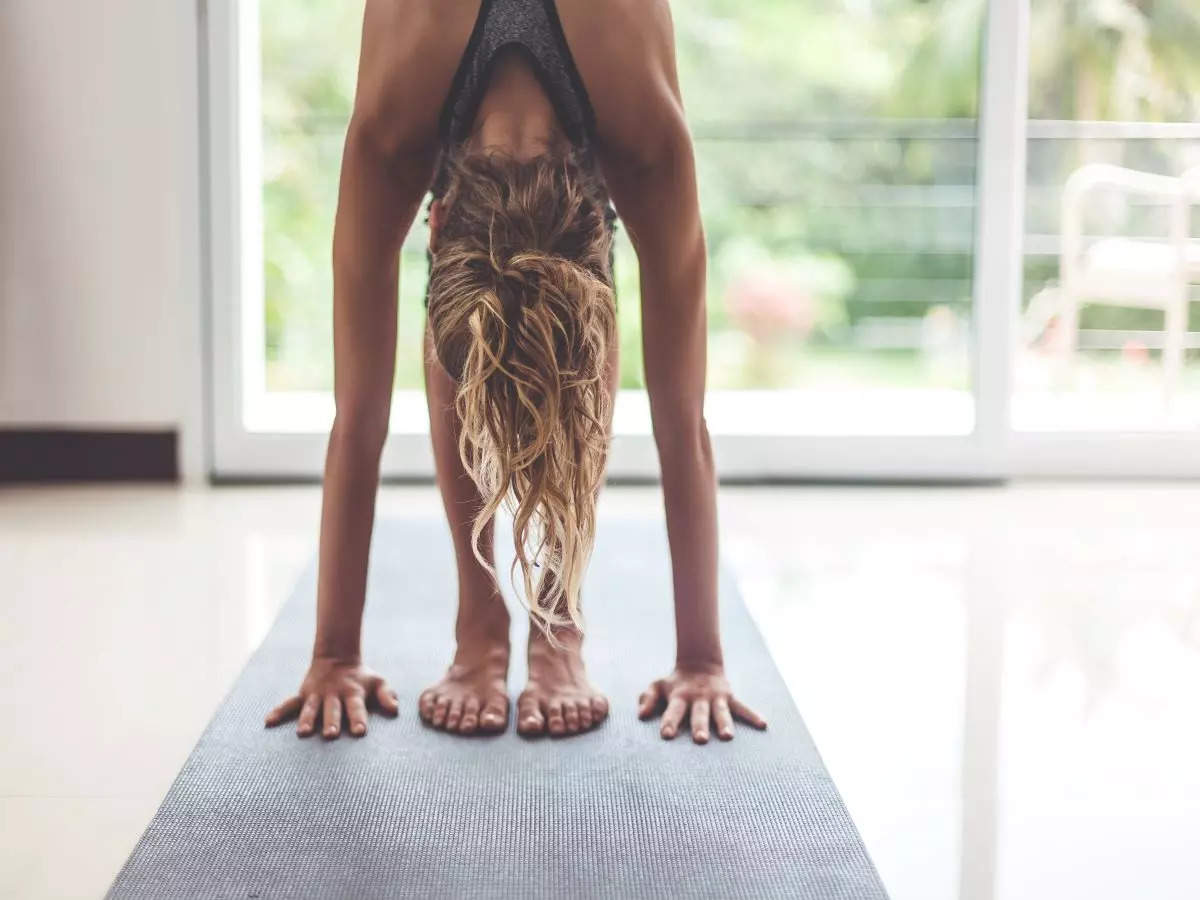Fitness
The Best Recumbent Exercise Bikes To Get Your Heart Pumping

Recumbent exercise bikes might seem like the laid-back cousins of a typical exercise bike, but you can still get a serious workout on one of these machines. If an upright exercise bike isn’t your speed due to a health condition or simply personal preference, the best recumbent exercise bikes are good alternatives.
The Nordictrack R35 is the best recumbent exercise bike on the market.
John Gallucci Jr., doctor of physical therapy and CEO of Jag-One Physical Therapy, says that recumbent bikes are particularly well-suited for people with low back pain or herniations. “The recumbent bike puts less stress on the low back, which gives you the opportunity to do cardiovascular exercise, which is great for your heart,” he says. Not only are you getting a great lower body workout, he adds that they can improve your balance and strength.
The best recumbent exercise bikes have large touch screens with Bluetooth and Wi-Fi connectivity to let you stream workouts—but the base cost for these models starts at over $1,000 and goes way up from there. However, if you’re looking to spend less than a grand on this piece of home workout equipment, there are also solid low-tech bikes at prices under $300. Read on to find the best options for a range of budgets and needs.
How We Chose The Best Recumbent Exercise Bikes
This list is intended for home gym users, so we did not evaluate bikes for their suitability in commercial spaces like physical therapy offices or commercial gyms.
To find the best recumbent bikes, I started by interviewing John Gallucci Jr., MS, ATC, PT, DPT and CEO of Jag-One Physical Therapy. I then visited an exercise equipment show room, where I used over a dozen different recumbent bikes and evaluated them by pedaling, adjusting the seat and tension, testing the controls and buttons, and noting any additional features. I interviewed the sales people about popular brands and standout models. I also read many user and professional reviews, and tracked my research in a spreadsheet. To make my final selections, I took into account the cost and value of each stationary recumbent bike.
What To Consider When Shopping For Recumbent Exercise Bikes
For people who are looking for a low-impact workout, a recumbent exercise bike can be a good option. However, these bikes are a major purchase if you’re considering bringing one home. Before you buy, you’ll want to consider the bike’s size, adjustment functions, tech and more.
Size
The top-of-the-line recumbent exercise bikes are big and heavy. They have a substantial footprint in your home, so if you’re short on space you may want to consider a folding option. Folding models tend to be less expensive, but they also don’t have many of the common features you’ll find in larger recumbent bikes, like touchscreens or water bottle holders.
Adjustments
Nearly all recumbent bikes let you adjust the distance from the seat to the pedals in some way. It’s the difficulty of this step that varies, and the number of possible seat positions. If you’re the only person using the bike, this may not matter, but if multiple people are working out on the bike, a seat that’s easy to adjust is important.
Most bikes also let you adjust the tightness of the foot strap, and some also let you change the incline of seat.
Tech
Like other kinds of workout machines, the consoles on recumbent exercise bikes run the gamut from simple LCD displays to fully Wi-Fi connected touchscreens. If you want the immersive experience of streaming a workout, prioritize a bike that has on-demand workouts via an app—just note that these services often require an ongoing subscription.
Can You Get A Good Workout With A Recumbent Bike?
In short, yes. “You could get a real workout on it,” Gallucci says. Recumbent exercise bikes are great for strengthening the lower body and getting a cardio workout, which is important for your heart and overall health.
But if you’re looking to strengthen your abs, this isn’t the way to do it. “When you’re on a recumbent bike, you don’t engage your core as well as you do on a normal bike,” he says.
Is It Okay To Exercise On A Recumbent Bike Every Day?
Yes, it’s generally safe to use a recumbent bike every day unless you have a specific health condition that limits your ability to exercise (if you’re not sure, check with a healthcare provider about your specific concerns). Also, be sure to read any user manuals or safety instructions that come with your bike.
Frequent use is possible because recumbent bikes offer low-impact exercise, which is typically easier on your joints. Gallucci says it’s “different than running and/or walking where you have that constant pounding on your ankles and your hips and your knees.”

Fitness
Can a

Exercising regularly is important for preventing dementia. But if it’s hard to rack up the recommended amount of activity during the five-day work week (150 minutes of moderate-intensity activity, like brisk walking, or 75 minutes of vigorous activity, like swimming), consider the “weekend warrior” approach — fitting it all into one or two weekly sessions. The approach might offer the same brain health benefits, according to a study published online Oct. 29, 2024, by the British Journal of Sports Medicine. Researchers analyzed the health and self-reported activity information of more than 10,000 dementia-free people in Mexico who were followed for about 16 years. After accounting for factors that could influence the results, such as lifestyle habits, scientists found that weekend warriors were 13% less likely to develop mild cognitive impairment (MCI), a precursor to dementia, compared with people who didn’t exercise — about the same benefit seen in those who exercised during the work week. While the study was observational and can’t prove cause and effect, it supports the idea that even less frequent exercise might help protect brain health, and it might be a more convenient option for busy people.
Image: © Luis Alvarez/Getty Images
As a service to our readers, Harvard Health Publishing provides access to our library of archived content. Please note the date of last review or update on all articles.
No content on this site, regardless of date, should ever be used as a substitute for direct medical advice from your doctor or other qualified clinician.
Fitness
Fitness face-off – Harvard Health

What’s in style? The question doesn’t just relate to fashion. Indeed, even exercise styles go in and out of vogue, echoing trends fueled by social media and other cultural drivers.
Case in point: high-intensity bursts of exercise have grabbed headlines over the past couple of years, with scientists generating an array of studies examining the health benefits of short spurts of movement lasting from one to three minutes. That might consist of jumping jacks, lunges, running in place, jumping rope, air boxing, running up stairs, or any other high-intensity activity.
Meanwhile, plenty of research continues to focus on the health advantages of moderate-intensity, continuous movement. Mainstay choices for these sessions include brisk walking, cycling, jogging, and elliptical and treadmill use.
Given the swings in popularity between the differently paced alternatives, perhaps the most pressing question is which one is better for us. It might seem certain exercise patterns might prove superior to others, but we should resist the temptation to believe that, says Dr. Meagan Wasfy, a sports cardiologist at Harvard-affiliated Massachusetts General Hospital.
“There are always trends, and each one claims to be the latest and best way to move your body,” Dr. Wasfy says.
Breaking down the data
What health benefits does each approach offer? A sampling of recent studies and official health guidance weighs in.
Evidence supporting exercise bursts includes the following:
- A 2022 analysis of data collected on more than 25,200 people who didn’t otherwise exercise (average age 62, 56% women) published in Nature Medicine found that those who routinely did brief bursts of vigorous activity — defined as three bouts, each lasting a minute or two — had significantly lower odds of dying or developing cardiovascular disease over the following seven years than participants who didn’t.
- A 2023 analysis in JAMA Oncology of more than 22,000 people who didn’t exercise (average age 62, 55% women) suggested that even short, intermittent periods of intense movement — a minute at a time, three or four times a day — was linked with 18% lower cancer risk over the following 6.7 years, especially for cancers of the breast, uterus, or colon.
Evidence supporting longer, moderate-intensity exercise includes the following:
- Adults who do any amount of moderate-to-vigorous exercise derive health benefits, including reducing their risks of cardiovascular disease, diabetes, and some forms of cancer, according to the CDC.
- A 2022 analysis in JAMA Internal Medicine involving 78,000 people (average age 61, 55% women) found their risk of heart disease, cancer, and premature death dropped by 10% over the following seven years for every 2,000 steps they logged each day, with the benefit peaking at 10,000 steps.
Sense a theme from the findings? Regardless of intensity, it’s apparent that any movement is good for your health.
“No one comes out ahead with regards to the long-term outcomes,” Dr. Wasfy says. “What matters most is moving your body and doing more of it. The sum of movement, over the course of a year or decades of your life, is what matters.”
Exercise caveats
One clear advantage to exercise bursts — or its cousin, high-intensity interval training (HIIT) — is that any high-intensity activity enables you to fulfill recommended exercise guidelines in less time. Health organizations advise adults to get at least 150 minutes of moderate exercise or 75 minutes of vigorous exercise (or some equivalent combination of the two) per week. For an HIIT workout, you alternate vigorous, short sprints with brief periods of rest or lower-intensity movement.
“It’s a time-efficient way to get your recommended exercise dose in less time,” Dr. Wasfy says.
High-intensity exercise does pose a few drawbacks, however. These include a greater risk of injuries and inflammation to joints and muscles. Additionally, for people with heart disease or its risk factors, sudden bursts of exercise could be more likely to bring on new cardiac symptoms.
“If you’re writing an exercise prescription not knowing anything about someone’s health history, you’d write it for moderate-intensity, continuous exercise,” Dr. Wasfy says.
If you’d like to increase your exercise intensity but have existing heart disease — or symptoms such as chest pain with vigorous movement — talk to your doctor in advance. Older adults who’ve noticed their ability to exercise has declined should also speak up.
Ultimately, Dr. Wasfy says, you should choose a style of exercise you really like — and will do consistently — and disregard fitness trends. “If you’re healthy,” she says, “it’s really your choice.”
Image: © Luis Alvarez/Getty Images
Fitness
Amitabh Bachchan’s diet and workout routine for staying fit at 82: Pranayam, yoga stretches, gooseberry juice and more

Amitabh Bachchan is a living legend whose popularity surpasses that of his contemporaries. At 82, his unmatched energy and commitment to fitness continue to inspire generations. Despite facing severe health challenges like tuberculosis, his disciplined lifestyle has helped him stand tall and active in the industry. Curious to know the secret behind his fitness? Let’s dive into the insights of Amitabh Bachchan’s diet plan and workout routine. (Also read: Sonu Sood shares his diet and fitness secrets for toned body at 51: ‘I’ve never tasted non-veg and I don’t drink’ )
How Amitabh Bachchan stays fit at 82
Earlier, in an interview with Humans of Bombay, Amitabh Bachchan’s wellness trainer Vrindaa Mehta revealed the actor’s unwavering dedication to fitness. She shared, “If Amitabh Bachchan can make time to exercise, normal people can too. The mindset is, when you know something is good for you, you just do it. It’s not about comfort, it’s not about not having time… If Mr. Bachchan can make time to exercise, regular people can of course, take out time to exercise.”
Talking about his fitness routine, Vrindaa added, “My sessions with Amit ji are more about breath work. We start off with basic breath exercises and move on to pranayams, and basic yoga stretches. Mindset… He’s the father of it all.”
Wellness trainer Shivohaam, who also works with Amitabh, highlighted the actor’s remarkable commitment to fitness. “There are times when we have to tell him, ‘Let’s not train right now, it’s not ideal for you.’ The point is, he does take out the time, whether it’s morning, afternoon, or evening, or even between meetings because he knows it’s important,” shared Shivohaam.
Amitabh Bachchan’s diet secrets
Amitabh Bachchan’s diet revolves around discipline and variety. In one of his blog posts, the veteran actor shared that he begins his day with tulsi leaves, followed by a breakfast featuring items like protein shakes, almonds, porridge, or coconut water. Other favourites include gooseberry juice and dates, providing a power-packed start to his mornings with a mix of healthy nuts and proteins.
When discussing his eating habits, Big B revealed, “In my youth, I would eat, but now I have left eating non-veg dishes, sweet items, rice, and won’t speak any further.” Skipping desserts and limiting sugar intake have been significant lifestyle changes that help him maintain his fitness and avoid risks like obesity.
-
/cdn.vox-cdn.com/uploads/chorus_asset/file/25822586/STK169_ZUCKERBERG_MAGA_STKS491_CVIRGINIA_A.jpg)
/cdn.vox-cdn.com/uploads/chorus_asset/file/25822586/STK169_ZUCKERBERG_MAGA_STKS491_CVIRGINIA_A.jpg) Technology1 week ago
Technology1 week agoMeta is highlighting a splintering global approach to online speech
-

 Science1 week ago
Science1 week agoMetro will offer free rides in L.A. through Sunday due to fires
-
/cdn.vox-cdn.com/uploads/chorus_asset/file/23935558/acastro_STK103__01.jpg)
/cdn.vox-cdn.com/uploads/chorus_asset/file/23935558/acastro_STK103__01.jpg) Technology1 week ago
Technology1 week agoAmazon Prime will shut down its clothing try-on program
-

 News1 week ago
News1 week agoMapping the Damage From the Palisades Fire
-
/cdn.vox-cdn.com/uploads/chorus_asset/file/25826211/lorealcellbioprint.jpg)
/cdn.vox-cdn.com/uploads/chorus_asset/file/25826211/lorealcellbioprint.jpg) Technology7 days ago
Technology7 days agoL’Oréal’s new skincare gadget told me I should try retinol
-
/cdn.vox-cdn.com/uploads/chorus_asset/file/25832751/2192581677.jpg)
/cdn.vox-cdn.com/uploads/chorus_asset/file/25832751/2192581677.jpg) Technology3 days ago
Technology3 days agoSuper Bowl LIX will stream for free on Tubi
-

 Business5 days ago
Business5 days agoWhy TikTok Users Are Downloading ‘Red Note,’ the Chinese App
-
/cdn.vox-cdn.com/uploads/chorus_asset/file/25835602/Switch_DonkeyKongCountryReturnsHD_scrn_19.png)
/cdn.vox-cdn.com/uploads/chorus_asset/file/25835602/Switch_DonkeyKongCountryReturnsHD_scrn_19.png) Technology1 day ago
Technology1 day agoNintendo omits original Donkey Kong Country Returns team from the remaster’s credits




















